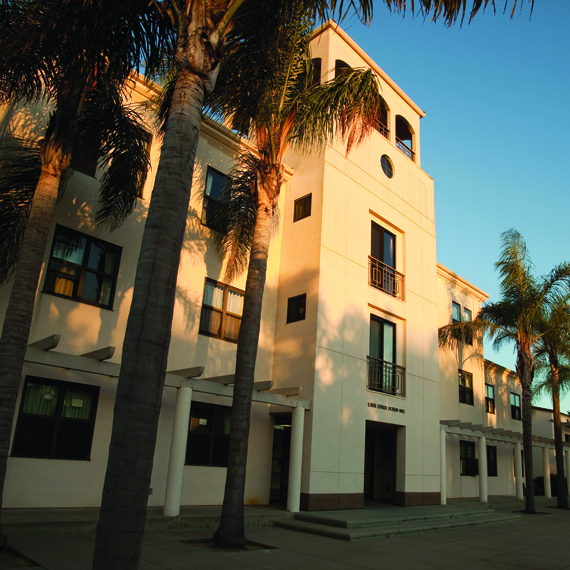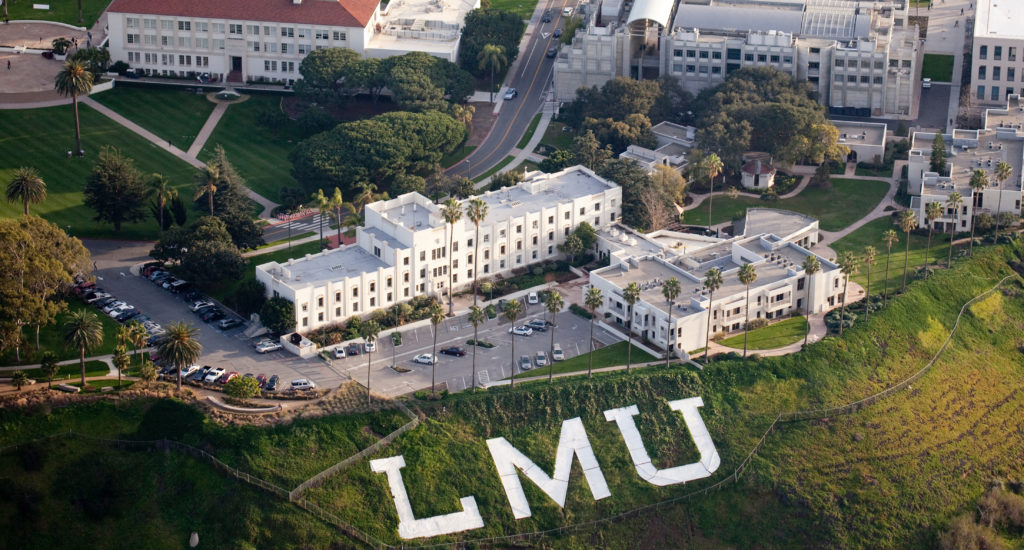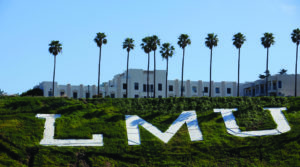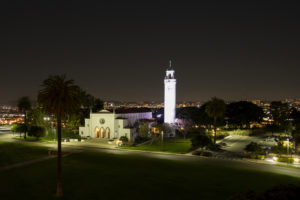STUDENT AFFAIRS | “The face of London was now indeed strangely altered,” Daniel Defoe wrote in “A Journal of the Plague Year” about one effect of the bubonic plague in 1665. The coronavirus pandemic of 2020 has wrought similar changes on Loyola Marymount University’s campus and programs. Among the changed, if temporarily, is Student Affairs’ Faculty in Residence program.
The Faculty in Residence program in the Student Affairs Division brings eight professors or invited scholars onto campus to live in residence halls among students. The express purpose is to maximize interactions between LMU faculty and students outside of the classroom. The program intends to incorporate academic life into the campus housing experience for students.
Under the best of circumstances, students gain the richer benefits of professors’ experience, and professors deepen their insights into students’ lives. Under stressed circumstances, adapting to virtual becomes a virtue.
Maybe the best example, said David Clawson, assistant professor of screenwriting who is residing in Rains Hall, would be for what was intended to be the first year of the LMU School of Film and Television’s Living-Learning Community in Collaboration. “Even though the students did not move to campus, many inquired if we would have an on-line version,” Clawson said. “With the approval of our deans, we put together a modified program for these first-year students, allowing them to start building the relationships they can expand upon once we are all together in person.”
Faculty in Residence are full-time tenured or tenure-track faculty who live in on-campus housing so that they can live and work with a specific Residence Hall community. By integrating LMU faculty members into the residential experience, the Faculty in Residence Program enhances student learning by incorporating the values of academic life with the residential experience in a seamless living-learning environment.
Aurorae Khoo, associate professor of screenwriting, who lives in Leavey 5/6, said, “Being a faculty in residence is the best way to interact and advise students in an organic way,” talking about before the pandemic restrictions. She said that her favorite event each year is reverse trick-or-treating. “I put my daughter in a Halloween costume, push her in a stroller, and go door to door with the RA’s passing out candy. We knock on every door and make one-on-one contact with dozens (maybe hundreds) of students all in one evening. I get a chance to ask residents about their classes, how the semester is going, and they get a chance to see the FIR program in action.”
Skinner Myers, clinical assistant professor of production in SFTV, who lives in Del Rey South, said, “Becoming a Faculty in Residence has allowed me to have insight into how college students live during their time at the university. It has given me more empathy in the classroom and has made me a stronger professor. It’s been wonderful watching the students grow and mature and I’m very happy to be a part of the Faculty in Residence Program.”
In addition to Clawson, Khoo and Myers, the 2020-21 cohort includes: Chaya Crowder, assistant professor of political science and international relations, who lives in the just-finished Palm North; Christina Eubanks-Turner, associate professor of mathematics and the director of the Master of Arts in Teaching Mathematics Program, who lives in the just-finished Palm South; Claudia Sandoval, assistant professor of political science and international relations, who lives in Del Rey North?; and Scholar in Residence Elias Wondimu, a formerly exiled Ethiopian journalist and the founder of LMU-based TSEHAI Publishers, who lives in Leavey 4.




